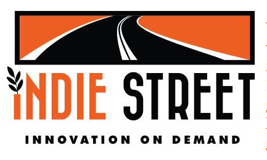As always Peter Broderick’s latest newsletter is a must read — this time it’s about the documentary “Hungry For Change” and how the directors’ incredibly success with the film is precisely because they gave it away for free, online. Once again, Peter’s been nice enough to let me share the newsletter here with you. I can’t recommend enough that you sign up for Peter’s Distribution Bulletin.
The extraordinary million-dollar success of HUNGRY FOR CHANGE marks a new era of opportunities for independents. It illustrates how “free” can be used to achieve broad awareness, generate revenue quickly, and build a worldwide audience.

The release of HUNGRY FOR CHANGE was unprecedented. The film:
– premiered online (having never screened publicly before)
– was available worldwide
– was absolutely free (for 10 days only)
The results were remarkable:
– 453,841 views around the world during the 10 day premiere
– over $1.02 million in sales of DVDs and recipe books in the first 14 days
HUNGRY FOR CHANGE is a documentary that challenges the myths perpetuated by the weight loss industry and shows how to develop a healthy, lifelong diet. It is the second film by dynamic husband-and-wife team James Colquhoun and Laurentine ten Bosch, who I started consulting with in 2008 when they were beginning to distribute FOOD MATTERS, which went on to sell over 230,000 DVDs (see Distribution Bulletin #14). James and Laurentine are based in Australia but came to Los Angeles last week, where they told me the inside story of their historic “Free Worldwide Online Premiere.”
James and Laurentine have learned how to tap the power of free. They’ve been experimenting with the possibilities of free for four years, first with FOOD MATTERS and now with HUNGRY FOR CHANGE.
FOOD MATTERS
Free Public Screenings – Instead of following the industry norm of charging organizations fees to hold screenings, the filmmakers took a risk and allowed anyone who registered to host a screening for free. The FOOD MATTERS website encourages the hosting of screenings:
“As part of our vision to provide life-transforming information that is accessible to all people, we are excited to allow free screenings of Food Matters around the globe.”
The website provides a free screening resource pack, which includes handouts, posters, and other publicity materials. James and Laurentine believed that the cost of lost screening revenues would be much smaller than the benefit of positive word-of-mouth from a greater number of screenings, resulting in increases in visitors to the website, mailing lists sign-ups, and DVD sales.
Free, Dynamic Website Content – The filmmakers regularly added content to the FOOD MATTERS website, making it a valuable resource for their audience. This included videos that were freely available to all visitors to the website who registered, which simply consisted of inputting a name and an email address.
Free Online Screening – In December 2010, FOOD MATTERS DVDs were put on sale from the website for one week at half price. This resulted in 4600 sales, the best week in 2 1Ž2 years of sales. In October 2011, the filmmakers took a more radical approach with even better results. They allowed all comers to watch FOOD MATTERS for free for 8 days. This stimulated direct and indirect sales of 9800 DVDs, twice as many as were sold when it was offered at half price. Even more impressive, over 37,000 people joined the mailing list during this event.
As James explained, when you offer a film for free you get sign-ups from a good percentage of everyone who views the film. When you are having a sale, you only get the customer information from those who actually make a purchase. “For us, we’re about creating a long-term relationship with our followers and not just selling to them,” noted James.

HUNGRY FOR CHANGE
After their successful experiments with free, particularly the online screening of FOOD MATTERS, James and Laurentine decided to go all the way with HUNGRY FOR CHANGE. They were aware of some films that had been released free online, such as Michael Moore’s SLACKER UPRISING, but knew of no major ones that had premiered online.
Pre-Release Marketing – They chose the term FREE WORLDWIDE ONLINE PREMIERE and released the trailer for HUNGRY FOR CHANGE on March 1, 2012. This was followed by two more eblasts with additional video content, including the first 4 minutes of the film, during the 21 days leading up to the premiere. They also partnered with the experts featured in the film. These experts had their own followers and shared in both the promotion of the free online premiere and the revenues from sales they referred.
Global Reach – The Free Worldwide Online Premiere was an instant hit. On its first day (March 21st) there were 45,211 plays. Tens of thousands of people watched the film each day. The premiere ended with a bang with 58,292 plays on the final day (March 31st). Altogether there were almost half a million views from more than 150 countries across the globe in just 10 days. These are astonishing numbers for an independent film that had never been seen before, had no paid advertising, and was not available through any retail channels.
Subscribers – There were 229,000 sign-ups in 14 days, a significantly greater number than FOOD MATTERS had gained in the previous 4 years. James estimates that less than 30% of the HUNGRY FOR CHANGE sign-ups were FOOD MATTERS subscribers, which means that at least 160,000 were new subscribers, almost doubling James and Laurentine’s already substantial online following.
Revenue – Everyone who viewed HUNGRY FOR CHANGE was given access to three special offers: the DVD for $34.95, the new recipe book for $49.95, or the DVD and the recipe book for $74.95. Each order came with free bonuses and free shipping. In the first 14 days, over 20,800 orders were placed totaling over $1 million in sales. Although most purchasers had already seen the film for free, many wanted to buy a copy for themselves or purchase it as a gift for family or friends.
Access – Beyond broad awareness, revenues, and sign-ups, there are other important benefits of free. It removes a major barrier between filmmakers and audiences. If the film is available at no charge, at least temporarily, it is accessible to everyone. From the beginning, James and Laurentine have been motivated by a strong desire to get their message out to more people. Free allows their films to be seen even more widely and enables them to build relationships with viewers.
Good Will – Another major benefit of free is good will, which has allowed the filmmakers to develop a truly interactive relationship with their audience. They talk directly to their followers who tell them what they want. This knowledge has enabled them to make and market films that meet their followers’ needs and continue to be seen by more and more people.
—–
Taking free to a new level has also expanded awareness of James and Laurentine and created new opportunities for them. They are now writing a book for HarperCollins, which will be published this fall to coincide with the retail release of HUNGRY FOR CHANGE.
© 2012 Peter Broderick
Peter Broderick is a Distribution Strategist who helps design and implement customized plans to maximize revenues for independent films. He is also a leading advocate of crowdfunding and crowdsourcing, championing them in keynotes and presentations around the world. You can read his articles at www.peterbroderick.com



 There is a lot of talk in independent film circles about the need to “eventize” the cinematic experience. The thought is that audiences are increasingly satisfied with viewing films and other video material on their private devices whenever their schedule permits and the need to leave the house to go to a separate place to watch is becoming an outdated notion, especially for younger audiences. But making your work an event that can only be experienced in a live setting is something few creators are exploring at the moment. Sure, some filmmakers and distributors are adding live Q&As with the director or cast, sometimes in person and sometimes via Skype; discussion panels with local organizations are often included with documentary screenings; and sometimes live musical performances are included featuring the musicians on the film’s soundtrack, but what about work that can ONLY be enjoyed as a live experience? Work that will never appear on DVD or digital outlets? Not only is there an artistic reason for creating such work, but there can be a business reason as well.
There is a lot of talk in independent film circles about the need to “eventize” the cinematic experience. The thought is that audiences are increasingly satisfied with viewing films and other video material on their private devices whenever their schedule permits and the need to leave the house to go to a separate place to watch is becoming an outdated notion, especially for younger audiences. But making your work an event that can only be experienced in a live setting is something few creators are exploring at the moment. Sure, some filmmakers and distributors are adding live Q&As with the director or cast, sometimes in person and sometimes via Skype; discussion panels with local organizations are often included with documentary screenings; and sometimes live musical performances are included featuring the musicians on the film’s soundtrack, but what about work that can ONLY be enjoyed as a live experience? Work that will never appear on DVD or digital outlets? Not only is there an artistic reason for creating such work, but there can be a business reason as well.


